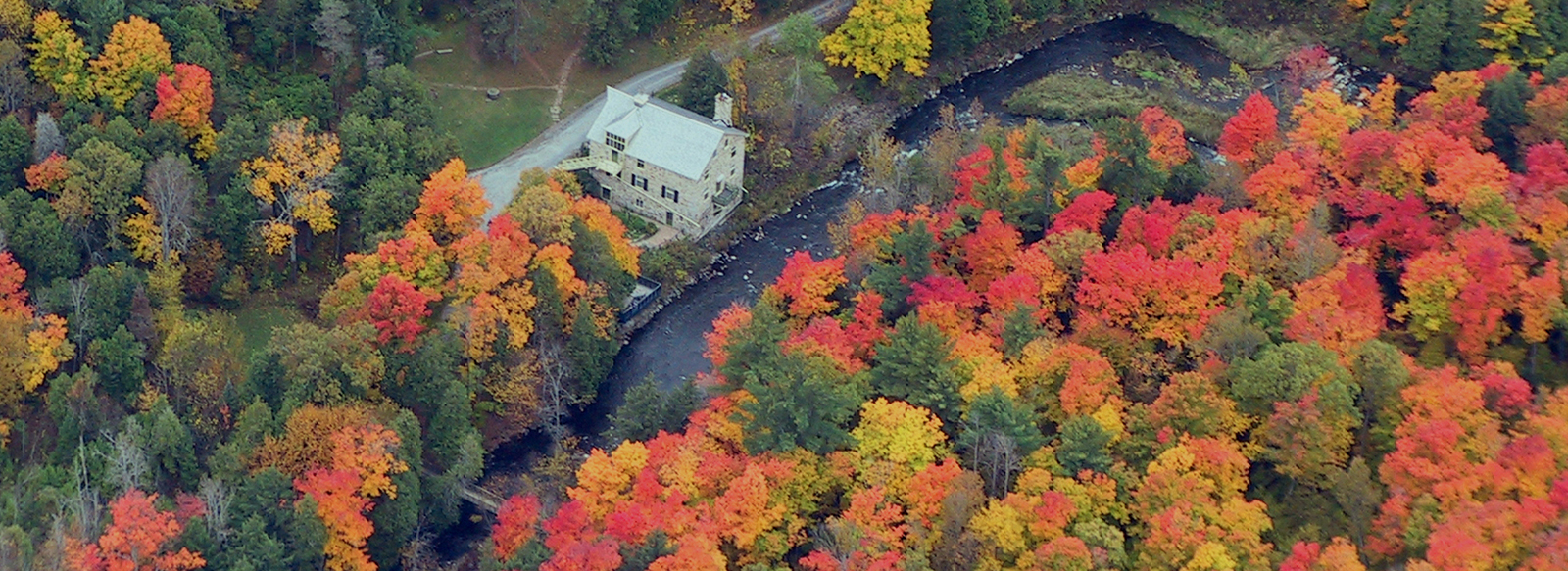Trails and Walks
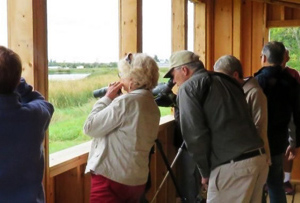 Almonte Lagoons Birding Complex
Almonte Lagoons Birding Complex
The Almonte Lagoons are situated behind the Waste Water Treatment plant and are accessed from Ramsay Conc. 8, 100 m north of County Road 16, across from the Auld Kirk Cemetery.
The complex includes a trail through a small woodlot into the Al Potvin observation tower that overlooks the north end of the lagoon. From there a trail runs 150 m east to the Mike McPhail Bird Viewing Shelter that overlooks the east side of the lagoon. This complex is all on Municipal property.
In addition to the woodlot, which is good for forest bird observations, there is an open field where you can observe field birds. During the spring and fall, the lagoon features many hundreds of duck and other migrating shore birds resting and feeding.
The facilities in the lagoon complex were erected and maintained by the Mississippi Valley Field Naturalists (MVFN).
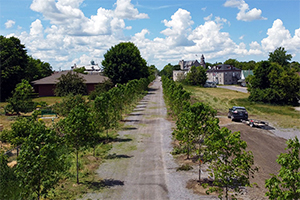 Ottawa Valley Recreational Trail (OVRT)
Ottawa Valley Recreational Trail (OVRT)
The OVRT is a multi-use corridor which allows for motorized vehicles, bikes and pedestrians year-round.
The County of Lanark is responsible for the management and the construction of the trails through Mississippi Mills.
To find out more information visit Ottawa Valley Recreational Trail
Residents can also email trails@lanarkcounty.ca or call 613-267-1353 if they would like more information, or have questions/concerns regarding maintenance, safety or conflict. If it is an emergency please call 9-1-1.
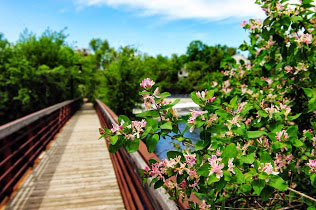 Almonte Riverwalk
Almonte Riverwalk
A scenic walk along the Mississippi River in historic downtown Almonte, Ontario.
Beginning at the Almonte Old Town Hall, follow a winding path through town with information boards to guide your journey along the Mississippi. Along the Riverwalk are stunning views of the falls, historic woolen mills revamped into condos, and a beautiful view of heritage Mill Street! No matter what time of day, the Riverwalk provides a delightful and enlightening experience.
The rich history of this area is evidenced at many sites along the Riverwalk. These include the former Mississippi Iron Works, Thoburn Mill, the railway crossing, and the Victoria Woollen Mill. Details can be found at points along the path.
Historically the Mississippi River was a travel route used by Indigenous peoples and a catalyst for industry. Now the river's value rests in its natural beauty, recreational opportunities, and green power generation. The path leads visitors through beautiful natural areas, historic sites, and businesses. The Riverwalk links our past to our future.
Along the way are stunning views of the Mississippi River as it weaves its way beneath the train bridge and past Kirkland Park, to a fabulous lookout by the Victoria Woollen Mill that offers a breathtaking view of the falls. From there, the Riverwalk crosses Almonte Street and continues to another lookout at the new power plant overlooking Metcalfe Park and the lower falls. Most of the walk is relatively easy, with attractive benches located along the path for relaxing, bird watching, and taking in the beauty of the river.
Brochures available in the Information Office, located at the Almonte Old Town Hall.
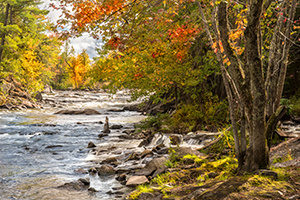 Blakeney Park
Blakeney Park
A pleasant network of trails and footbridges follows the course of the Mississippi as it rushes through a series of rapids and falls at Blakeney. In early spring it’s a popular destination for whitewater kayakers, as it reaches Class IV in the degree of difficulty. Today the original beauty of the area is complimented with trails and small bridges contributed by volunteers of the Almonte Fish & Game Association. Visitors and locals enjoy swimming, fishing kayaking, walking and having picnics along the river while up on the hill residents appreciate the quiet atmosphere of the hamlet.
 Mill of Kintail Walking Trails
Mill of Kintail Walking Trails
Explore 4.7 km of walking trails at this historic site at 2854 Conc. 8 Ramsay in Almonte (Mississippi Mills). The grounds, operated by Mississippi Valley Conservation Authority (MVCA), are open from 10:30 a.m. to 4:30 p.m. from Victoria Day to Thanksgiving. Well-marked trails take you to the mill and over the bridge. Museums, a gatehouse, store, toilets, a playground, parking and picnic area are onsite. Call 613-253-0006 (MVCA), 613-256-3610 (Mill of Kintail).
High Lonesome Nature Reserve
High Lonesome Nature Reserve, a 200 acre property located in the Pakenham Hills, was donated to the Mississippi Madawaska Land Trust by the family of the late Barry Spicer in April 2012. A network of trails through the forests, over the hills and streams, by the ponds and through the meadows has been developed and cared for by the donor’s brother Ken Spicer. Ken has documented many of the natural riches found there, shared them with the MMLT and encouraged the Land Trust to complete the work he began. MMLT has committed to conserve High Lonesome as a nature reserve in perpetuity.
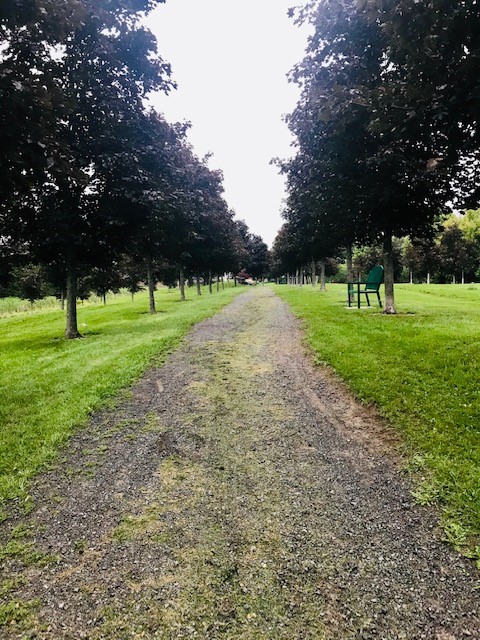 Veteran's Memorial Walkway
Veteran's Memorial Walkway
A unique joint venture between the Municipality of Mississippi Mills and the Royal Canadian Legion Branch 240 Almonte, the idea of a living memorial to our veterans dates back to 2003. The local legion would sell and plant red maple trees to families who wanted to honour a veteran and the municipality would maintain the site. Currently there are more than 120 red maple trees planted along a well maintained pathway between Perth and Bridge streets. Each tree is identified with the name of the honouree (some still living, others departed) and there is a central map of the site so that families can easily find their tree.
Metcalfe Geoheritage Park
Metcalfe Geoheritage Park is located beside the Mississippi River in Almonte, Ontario – near the Mississippi River Power Corp hydro plant at the west end of Mill Street. This initiative was made possible by the support of the Mississippi River Power Corp., the Municipality of Mississippi Mills, the Canadian Geological Foundation, the APGO Education Foundation, and the Metcalfe Geoheritage Park Committee.
The 22 samples on display are sedimentary rocks of Ordovician age from our area, about 490 to 440 million years old, along with older igneous and metamorphic rocks of Precambrian age, from about 2.5 billion to 1 billion years ago. They collectively illustrate many of the features that allow geoscientists to unravel Earth’s remarkable geological history.













